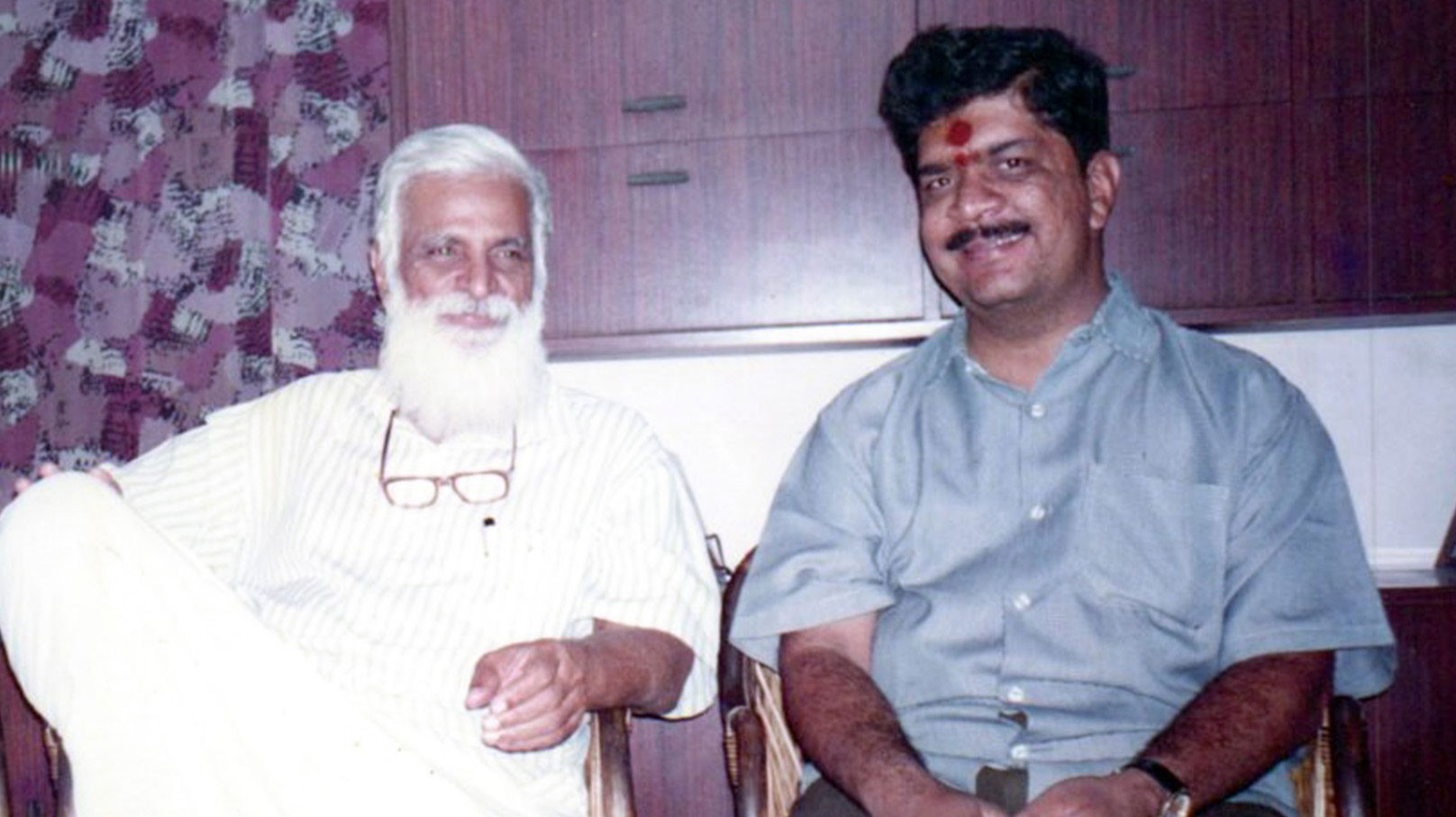
In traditions of Śrī Vidyā worship, Śrī Guru has a pivotal role and is the most venerated one at all times. Bhāvanopaniṣat in its opening statement says: śrī guruḥ sarvakāraṇa bhūtā śaktiḥ. In some traditions, we find adjectives given to the guru, parama guru, and parameshti guru lineage in the initiated Guru pādukā.
For Sva Guru it is - svarūpa nirūpaṇa hetave svaguru
- svarūpa = The identity of the self, The reality of this existence can be understood only if you know it’s true nature, that nature is explained by your Śrī Guru which is sva-rūpa.
- nirūpaṇa = reveals, defines. The one to one interaction between Guru and shishya, is the guru who reveals or defines using the Vedas, Upanishads this above reality.
- hetave = cause of, means. This is managed and guided by Śrī Guru and he is the cause and means for this knowledge.
On a whole, this will point at the ‘’tat” in the upadeśa mahā vākya “tattvamasi”, which relates to the knowledge of self and its clarity.
For Parama Guru, it is - svaccha prakāśa vimarśa hetave paramaguru
- svaccha = blemishless, unstained, pure. The Brahman or ātma is referred here.
- prakāśa = Light, here it means knowledge of the ātma, which is given some light by his words and actions, this he had got from his guru, hence this is seen as the parama guru’s aspect.
- vimarśa - The experiential knowledge. After knowing texts, the practical aspect is seen in tantric approach as upāsanā and its related Japa, pūjā homa, etc. This also is from tradition; hence the parama guru is related in this aspect
- hetave = cause of, means. The whole of the above is managed and guided by Śrī Parama Guru and he is the cause and means for this knowledge and actions.
On a whole, this will point at the “tvam” in the upadeśa mahā vākya “tattvamasi”, which relates to the practical aspect done by the individual on the initiation.
For Parameṣti Guru it is - svātmārāma pañjara vilīna tejase parameṣṭhi guru
- svātmārāma = Having the pleasure of residing in own self. On continuous diligent practice one gets established in the self. Having set up the tradition, now the sādhaka will indulge in deeper meditation and realize the pleasure of self, this is the ideal state seen as parameṣti guru’s aspect.
- pañjara = The cage, this physical body which is the basis of the sādhana
- vilīna = the bliss is imbibed and is soaked in every cell of the body.
- tejase = Effulgence, which is the light showing the path to attaining this state of bliss.
On a whole, this will point at the “asi” in the upadeśa mahā vākya “tattvamasi”, which relates to the realization of bliss in the present - Body level itself.
Source: "Meditative Texts - Revised Thoughts on the Way" by Yogamba Sameta Atmanandanatha (Ramesh Kutticad)
Yogamba Sahita Atmanandantha (Ramesh Kutticad) is a Śrī Vidyā Guru from Chennai. He is associated with Guruji since 1996. Smt. and Sri Ramesh have painstakingly written the following scholarly, research. We're grateful to him for allowing us to make these articles available for the public.

